Top 5 women of organized crime
Men have long governed the Mob world but the gender gap has narrowed with rise of female bosses in Italy
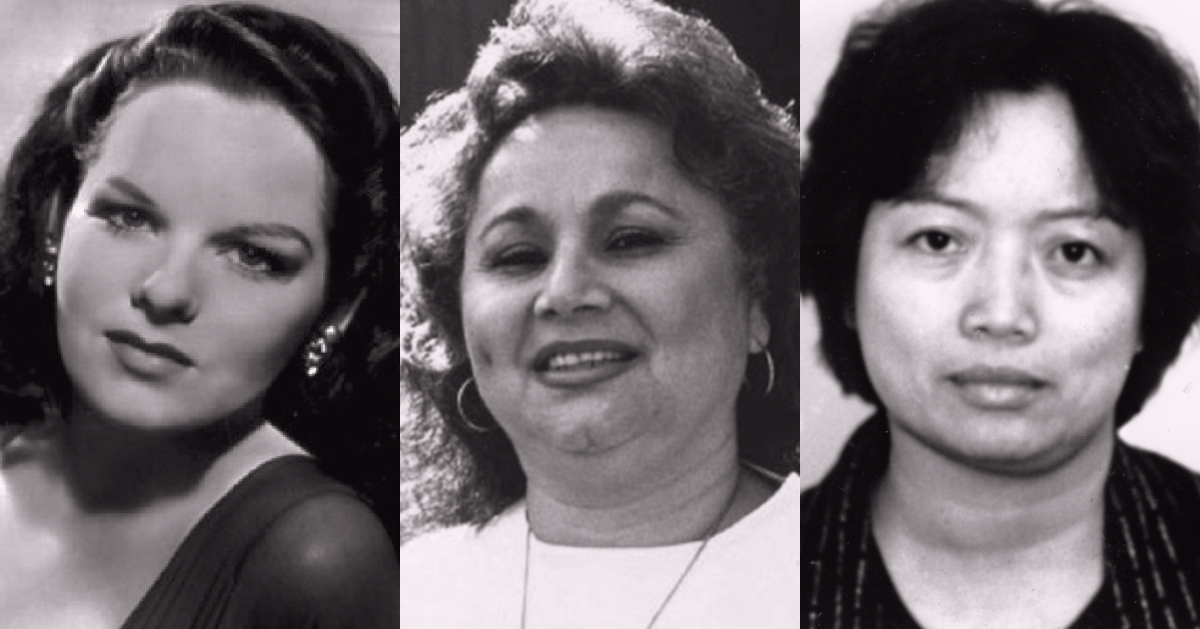
Men have dominated the history of organized crime as bosses, capos, soldiers and associates. They traditionally relegated women to servile roles as prostitutes, shills, dancers and servers. America’s La Cosa Nostra and Sicily’s Mafia are old-style patriarchies. American crime families have been men-only clubs, and women can’t be “made.” In Mob movies, females typically portray mothers, wives, siblings, girlfriends, “molls” and, at best, crime-wise, low-level smugglers.
However, that history has changed to a limited but important degree within the past couple of decades, as law enforcement agencies across the globe arrest more and more male Mob bosses and drug kingpins. These men receive lengthy prison terms, creating the demand for outside help to run their rackets. In Italy, where its ubiquitous organized crime is seemly entrenched for good, this reality has presented opportunities for a number of women to substitute for or replace men as crime bosses.
Anti-Mafia crackdowns by Italian police started in the 1980s with stringent new laws. One national statute gives the government the right to seize the assets of suspects who intimidate, exploit or use codes of silence to obtain businesses, or to sway elections. Another imposes precise rules on selected prison inmates convicted of murder, extortion or other Mafia-type crimes. The rules include no phone use and tight restrictions on prison visits and recreation to restrain communication.
These limitations, along with the increase of bosses sent to prison, induced the Mafia to transfer its illicit funds and control of criminal rackets increasingly to women. According to the investigative news website TransCrime, while Italian courts indicted only one female boss in 1989, they indicted 89 of them in 1995.
Recent research by TransCrime shows that male bosses headed for prison commonly hand their assets over to their wives or sisters. Even though women made up only 2.5 percent of those sent to prison for Mafia-linked crimes, they controlled a third of Mafia financial resources. Women have served as acting bosses in Italy’s major crime families, including the ’Ndrangheta and Camorra.
“There is a growing number of women who hold executive roles,” Gaetano Maruccia, an Italian police commander in greater Naples, told The Daily Telegraph newspaper in 2009. “They are either widows or wives of husbands who have been put in prison. They hold the reins. They’re very good at mapping out strategy, even sharper (than the men).”
In the United States, where crime is less organized and the La Cosa Nostra is only a shadow of its former self, that hasn’t proved true – with some notable historical exceptions.
Here are descriptions of five women who broke the glass ceiling and gained a measure of success, if temporarily, in organized crime. Since we consider “organized crime” to be multi-layered, structural criminal organizations, smaller teams of bandits from the 1930s “Gangster Era” are not included. As a result, we did not consider such recognized female offenders as Bonnie Parker of the Barrow gang and Ma Barker of the Barker crew for this list.
Virginia Hill
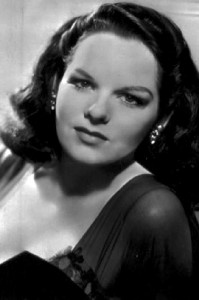
Any list of women in organized crime, at least in America, has to include Virginia Hill. She reached the highest heights of any woman in America’s national syndicate, then or since. From the 1930s to the late 1940s, her beguiling ways and steely nerves enticed, and inspired the confidence of, top-flight hardened mobsters such as Charles “Lucky” Luciano, Meyer Lansky, Frank Costello, Anthony Accardo, Jake Guzik, Murray Humphreys, Charles Fischetti, Jack Dragna, Joe Adonis, and, of course, Benjamin “Bugsy” Siegel. These men employed her as a money launderer, cash courier, Mexican heroin trafficker and informant on Mob activities. While on assignment in Mexico, she flashed her pricey furs, jewels and body to seduce wealthy and powerful men to seal heroin deals for the syndicate and secure the cash.
Hill was born in 1916 into the first American generation to emerge from the 1920s, when women started their “liberation” from their late Victorian-era mothers’ harsh rubrics about dating and sexual mores. By 1933, at age seventeen, Hill moved from her native Alabama to Chicago. She worked as a “shimmy” dancer and possibly a prostitute during the Chicago World’s Fair. Her life changed in 1934, while waitressing in a restaurant frequented by men in the Outfit gang while their boss, Al Capone, did time in prison. One was Joe Epstein, a crafty bookmaker. He convinced Hill to be his shill by placing large cash bets at a racetrack for a ten percent commission, and use her looks to sucker men into stupid bets. Virginia made them both quite a sum. Turned out, even as a teen, she had a personality ripe for racketeering. The infatuated Epstein sent her cash, which he withdrew from a safe deposit box, for almost the rest of her life.
Hill’s romance with Siegel (they met in New York in about 1937) was co-dependent, rocky and violent. It got more serious in the early 1940s, and by 1945, she joined him in dusty Las Vegas, where he had schemed himself in as Mob-backed developer of the planned Flamingo Hotel. Because of Siegel’s belligerent demands for expensive materials and elaborate construction, he blew through about $6 million invested by the syndicate. His angry hoodlum partners heard rumors that Siegel used Hill to stash away perhaps $2 million in a Swiss bank.
Hill colored her hair different shades during the Flamingo’s several opening nights starting on December 26, 1946. However, most of the hotel rooms were not ready for guests, and the casino lost so much to gamblers that Siegel had to close it down for a while.
According to the most prominent theory, Siegel’s East Coast Mob backers concluded they had to eliminate him permanently, even as the Flamingo performed better in 1947. Syndicate representatives told Hill to tell Siegel she had to travel to Paris to shop for wine for the Flamingo. That June, Siegel was shot and killed as he sat in their rented house in Beverly Hills. She heard about it from a guest at a party in Paris. Hill would not know it yet, but Siegel’s demise, and its subsequent publicity, reduced her usefulness to the Mob and led to her decline.
Her infamy in the news came to the attention of the Internal Revenue Service, which pursued her for non-payment of taxes starting the late 1940s. In 1950, she met and married an Austrian skiing champion and had a son with him. The following year, the U.S. Senate’s Kefauver Committee compelled her to testify for its investigation into national organized crime. In a hearing room in New York, her evasive, obnoxious and entertaining testimony about Siegel and the syndicate on live television made her a household name.
Still trailed by the IRS, Hill tried to move frequently but authorities caught up with her and forced her to sell her house, cars, furs and other valuables, including jewelry given to her by Siegel. The sale drew $41,000, not enough to cover what she owed. She and her family moved to Austria. Epstein met with her in Europe. Hill made dozens of border crossings into Switzerland from 1952 to 1956. Government agents suspected she deposited money for the syndicate. A grand jury indicted her in Los Angeles on tax evasion charges. The IRS claimed she had evaded $221,000 in taxes. If she went back to America, she faced certain arrest and prison time.
In the 1960s, often depressed, she spoke of suicide. Epstein later claimed the Mob-provided funds he held for her had run out by 1965. That year, Hill attempted suicide by ingesting sedatives, but her husband got her to a hospital in time. However, in 1966, a person on a morning walk discovered Hill’s body lying in the snow next to a tree in Austria. She was the apparent victim of a self-administered overdose, months short of her fiftieth birthday.
Stephanie St. Clair
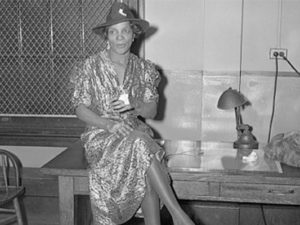
Stephanie St. Clair, the notorious “queen” of the illegal numbers racket in New York’s Harlem neighborhood, sat in a witness chair to testify about payoffs she made to New York police to protect her employees from arrest. The date was December 8, 1930, in a Prohibition-era city reeling from recent exposures of police officers who, as the New York Daily News put it, “for years have waxed wealthy on vice, gambling and speakeasy shakedowns.”
What followed was an extraordinary and daring performance by St. Clair, a haughty, profane and driven African-American woman still at the peak of her authority as one of the wealthy bankers for the numbers racket in Harlem. By 1930, she was reportedly worth $300,000 (the purchasing power of about $4.3 million today). But her reign wouldn’t last long, as more powerful white mobsters came calling to take over.
St. Clair had arrived at the Superior Court building in an expensive squirrel fur coat and cloche hat. In court, prosecutors presented evidence to support allegations of graft by New York’s vice cops. St. Clair was a key witness, despite her reputation as financial backer for illegal numbers games. The court charged some officers with demanding protection payments from St. Clair and the two other chief numbers bankers in Harlem, Casper Holstein and Wilfred Brunder.
Speaking in the French accent left over from her childhood in the French-run island of Martinique in the Caribbean, St. Clair testified that she knew all the plainclothes vice cops in Harlem. She paid them to not to arrest her workers or customers found holding one of her policy tickets, used for betting the numbers. She said the bribes came to $6,000 as of 1928. Yet the cops double-crossed her and made arrests anyway. She named names – such as police Lt. Peter J. Pfeiffer, whom she claimed accepted her gifts totaling $1,100.
“My first payment to Pfeiffer was $500,” she said. “I gave it in cash to [Harlem gambler] ‘Mustache’ Jones. Then Pfeiffer called me up and said, ‘Thank you.’ The next payment was $100 and the third $500. Jones took the money to Pfeiffer and I recognized the voice that later said, ‘Thank you.’ Naturally, I wanted to be sure that the lieutenant got the money.”
The inquiry – which found at least eight plainclothes officers had framed female defendants in vice cases – proved devastating for the New York Police Department. In a shake-up ordered by Mayor Jimmy Walker, the department either reassigned – or in the case of Pfeiffer’s superior, fired – five top commanders. It required plainclothes officers in Manhattan and the Bronx to return to full uniform.
St. Clair maintained her no-nonsense resolve to take on New York’s political establishment and gangster bosses – after she had nearly conquered Harlem.
Born in 1896 (some say years earlier) in Martinique, St. Clair immigrated to New York in the early 1920s and entered the numbers, or “policy,” racket in Harlem. People referred to her as “Madame.”
The racket involved betting on a three-digit number to win. The winning digits came from random – and unpredictable – banking figures published in the newspaper, or the closing numbers of the New York Stock Exchange. Later, the winning numbers – again, chosen at random, to eliminate fixing – were based on what daily horse races paid at a selected pari-mutuel track, such as Hialeah Park in Florida.
The numbers game was a quintessential part of life in Harlem, where upwards of half of its residents placed bets, typically of five or ten cents. Numbers games, affordable gambling for the poor, provided more local jobs than any other business in Harlem, including numbers runners and money collectors. Runners would go to their assigned “drops” in candy stores, beauty shops and other small businesses to pick up betting slips with numbers chosen by customers. The odds to win were 1,000 to 1 against, but the payoff odds were 600 to 1, and a five-cent bet could win $30 (worth around $430 today). Still, few people won.
By the late 1920s, St. Clair was a wealthy woman. As the banker taking the risk to cover winning wagers, she was the biggest earner, garnering about one-third of the game’s profits. By one account, she made up to $250,000 a year. She lived at 409 Edgecombe Avenue, the finest apartment building in Harlem.
In 1929, police caught her carrying numbers betting slips. She would serve eight months in state prison. Later, she did more time for shooting and wounding (not seriously) her then husband.
With the end of Prohibition anticipated in 1932 – and likely taking effect the next year – New York gangsters who made their fortunes selling illegal beer and liquor knew they had to find new rackets. Dutch Schultz, the “beer baron of the Bronx,” coveted the city’s numbers racket. By then, New York’s illegal numbers games took in $20 million a year. Schultz believed he could greatly expand that with better management. So he and his shady lawyer Dixie Davis approached the numbers bankers of Manhattan, offering them a deal to let Schultz take over if they each paid him $500 a week. One complied, the others refused, including Harry Miro and St. Clair. Schultz’s men forced Miro to comply at gunpoint.
Schultz worked on Harlem’s other African-American numbers bankers, Holstein and Brunder, by lending them thousands of dollars, calling the loan in when he knew they could not pay it back and taking over their numbers routes in retribution.
St. Clair was now the only hold-out. Schultz threatened her and had his thugs assault her employees. In 1932, Madame St. Clair talked to police and reporters about it, extended a plea to Mayor Joseph McKee and took out newspaper ads accusing gangsters such as Schultz and crooked politicians of trying to take her livelihood away. She allegedly attacked and broke the windows of white-owned small businesses in Harlem that accepted bets for Schultz. The gangster refrained from physically harming her, but his intrusion with his heavily armed hoods took its toll, and St. Clair had no choice but to surrender her territory and customers.
Schultz did expand the numbers racket by 1935 – to an estimated $100 million a year. He used his numbers whiz, Carl “Abba Dabba” Berman, to make sure that heavily bet three-digit numbers did not win. Berman bribed racetrack technicians to alter the numbers.
Meanwhile, gangland slayings were common all over town. Schultz, who defied the city’s ruling Mob chiefs by plotting to kill special prosecutor Thomas Dewey, was one such target. On October 23, 1935, gunmen, surely sent by New York’s top mobster Charles “Lucky” Luciano, burst into a New Jersey restaurant and opened fire, mortally wounding Schultz and killing Abba Dabba and two Schultz henchmen. Schulz lingered in the hospital until the next day, speaking nonsense in a delirium.
St. Clair had the last laugh. After Schultz died, police found a telegram among his belongings. The message read: “Don’t be yellow. As ye sow, so shall ye reap. Madame St. Clair, policy queen.”
St. Clair’s prominence, however, faded thereafter. One of her employees, Ellsworth “Bumpy” Johnson, agreed to oversee the numbers in Harlem, but he worked for Luciano, whose family evolved into the Genovese crime group. The La Cosa Nostra held onto illegal numbers in Harlem until New York legalized the lottery in the 1970s.
Johnson, a convicted drug dealer with about 40 arrests, died in 1968. St. Clair followed him in death later that year.
Griselda Blanco
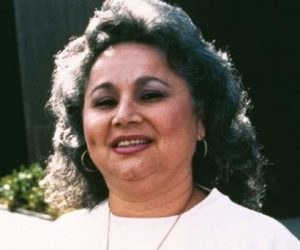
Her infamy as a cold-hearted murderer and shrewd Miami-based narco smuggler, whose syndicate imported a billion dollars’ worth of cocaine, made for a cable channel biopic last year, Cocaine Godmother, starring Catherine Zeta-Jones. But while cinematic, the life and death of Griselda Blanco is the story of the worst of all female mobsters, and that goes for most male ones, too.
Among the words used to describe Blanco during her rule in the “Cocaine Cowboy” era of drug-addled Miami in the 1970s and 1980s was “bloodthirsty.” A mother of four, she reportedly laughed while listening to men she ordered tortured, as a way to teach them not to harm her family. The number of murders she allegedly directed ranges from 40 to as many as 200, extending from metropolitan Miami to Queens, New York. Police in Miami linked her to the 1979 Dadeland Mall massacre, a machine gun attack in a shopping center that killed two people, during a war between Colombian cocaine suppliers and Cuban distributors.
In one fateful murder attempt Blanco directed in 1982, the hit man missed and accidentally shot and killed the two-year-old boy of the intended victim. A Miami Police sergeant later claimed Blanco expressed gratitude that the child’s death would upset the man she targeted. The motive for the hit: The man disrespected her three sons, who helped manage her empire. Several months later, Blanco had a married couple, who owed her for dealing cocaine, shot dead in front of their children.
Blanco’s reputation for smuggling cocaine from the notorious Medellin Cartel of Colombia to the United States earned her the nickname “La Madrina” – the Godmother. Her drug operation was one of the largest of the dozen so-called Colombian “Mafias” in the United States. To traffic on average a few thousand pounds of Medellin white powder a week from south Florida to New York, she invented a special women’s underwear in which her smugglers hid cocaine, and had more stuffed into the false bottoms of suitcases.
After she killed her three husbands in a fit of pique, people called her “The Black Widow.” She liked to serve cocaine to young girls and watch them pose nude. She held frequent orgies at her Miami home. Another anecdote dubbed her as “compassionate” for agreeing to a doomed man’s wish that instead of decapitating him, she’d shoot him in the head.
Just how her sociopathic personality manifested itself is one for the psychiatrist’s couch, which she probably never visited. Blanco, born in Colombia in 1943, dirt poor and abused, she was only eleven years old when she got away with her first murder. A teen bride, she killed her first husband, and with her second hubby illegally snuck into the United States in the early 1970s. Facing arrest in New York for drug trafficking in 1975, she fled to Colombia but soon smuggled herself back to Miami.
Her chain of dealers from Colombia brought in as much as $80 million a month in cocaine to the United States, but at the cost of many murders. Finally, federal agents arrested her in California in 1985. A federal court in New York convicted her on narcotics trafficking charges, sentenced and shipped her to a U.S. prison in Florida. While she languished there, two of her drug-dealing sons were murdered.
In 1994, Florida charged her in the killings of the two-year-old boy and the married couple. She faced the death penalty, but the case fizzled after two secretaries in the state prosecutor’s office allegedly had “phone sex” with lead prosecution witness Jorge “Rivi” Ayala, Blanco’s hit man who killed the three victims. Instead, Blanco in 1998 pleaded guilty to second-degree murder and got three concurrent twenty-year sentences. In 2004, thanks to lax sentencing guidelines from the 1990s, she only had to serve one-third of her sentence and won release from prison. U.S. immigration officials deported her to Colombia.
On September 3, 2012, the 69-year-old Blanco stood in a butcher shop in Medellin when an assassin drove up on a motorcycle, fired two shots from a handgun into her head and sped away. Even in “retirement” from crime, she could not escape her ruthless past. Locals speculated her killer used a motorcycle because Blanco herself instructed gunmen to ride on them to surprise and murder someone on her hit list.
Sister Ping
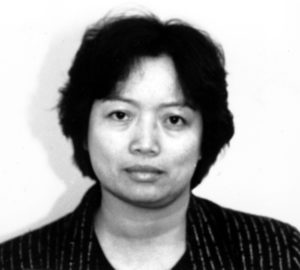
Cheng Chiu Ping, or “Sister Ping,” more than earned the sinister sobriquet “the Snakehead,” the Chinese nickname for a human smuggler.
Sister Ping (aka “Big Sister Ping”), as leader of an underground crime group in New York’s Chinatown, trafficked about 3,000 illegal immigrants from China to the United States. Charging a high of $40,000 a head, she amassed herself a fortune of $40 million in the 1980s and 1990s.
In her prime, she financed dangerous and inhumane voyages to smuggle her customers from Hong Kong to Guatemala and New York. One vessel she backed, the Golden Venture, a rusting cargo ship, ran aground in 1993 off Queens, New York. Ten of 300 starving passengers who took the 100-day journey from China died after leaping from the ship and trying to swim ashore. Five years later, another one of her smuggling ships capsized on the coast of Guatemala and fourteen of her customers drowned.
To this day, some people living in New York’s Chinatown praise Sister Ping as a kindly person who gave immigrants, specifically from her native Fujian province in China, the chance to move to America and rise from poverty. She also loaned money to those in need and found employment for the jobless, they said.
But FBI agents and federal prosecutors who investigated Sister Ping for more than a dozen years concluded otherwise, reporting that she hired violent thugs, members of the Fuk Chin Gang, to collect balances on fees owed by her trafficked clients.
Sister Ping, born in 1949 in Fujian, arrived in the United States as an illegal immigrant from Hong Kong in 1981. She set up a variety store, obtained naturalization papers under false pretenses and had her husband and kids join her from China. She recognized the loosening of American rules regarding China, and felt the time was right to make a business out of illegal immigration.
By 1982, she had organized an illicit banking scheme allowing her immigrant customers to wire money back to China. She also used it to loan funds – at an exorbitant thirty percent interest rate – to Chinese residents wanting to use her smuggling service. Using faked documents and bribing officials, she started shipping small groups of Chinese to Central America, before a trip to the United States, for about $18,000 per person. Police said that by the late 1980s, Sister Ping had loaned money to just about everyone in Chinatown’s Fujianese enclave.
The FBI learned of her operation after her 1989 arrest for trying to bribe an American officer to let her smuggle aliens to New York from Canada. Investigators found in her possession a list of safe houses for her customers across the world. Convicted of smuggling, she served four months in prison, and then resumed her illicit business. After the protests in Tiananmen Square in the Chinese capital of Beijing, the U.S. permitted additional Chinese nationals to emigrate, which greatly increased Sister Ping’s smuggling trade, but also drew gangs in Hong Kong and New York into the “snakehead” game. In New York, trafficked aliens who were late or could not meet their fee payments faced torture and murder.
In the early 1990s, Sister Ping had laundered proceeds from her human smuggling racket to buy a travel agency, clothing store, real estate business and some restaurants in Chinatown. She worked the kitchen and waited tables in one restaurant. Meanwhile, the smuggling ring had expanded to involve a New York Fujianese gangster, Ah Kay. As many as twenty-five ships loaded with thousands of people set sail from Fujian in one brief period in 1993. One was the barely seaworthy Golden Venture, which Kay had won in a poker game.
When the FBI took associates of the Fuk Chin Gang in for questioning, they reported on Sister Ping’s crime activities, and a grand jury indicted her in 1994. Sister Ping jumped bail, made it back to China and restarted her smuggling ring there. Police in Hong Kong arrested her at the behest of U.S. authorities. She fought extradition but was sent back to face charges in 2003. In a courtroom in New York in 2006, the feds paraded in a dozen witnesses, from Guatemala, Canada, Hong Kong and the United States. Sister Ping made a meandering speech, claiming prosecutors had fabricated the evidence against her. However, Judge Michael Mukasey denied that and admonished her for being “willing to take advantage of the attraction of the United States for thousands of other people and turn it to your financial advantage.”
The jury convicted her of immigrant smuggling, money laundering and trafficking in kidnapping proceeds. Mukasey slapped the maximum penalty on her – thirty-five years in prison. Observers considered it the end of the Golden Venture disaster.
In 2014, Sister Ping, the “mother of all snakeheads,” died in prison at sixty-five. In reaction, a Fujian immigrant man living in Chinatown told the New York Times: “Sister Ping was good, honest, and her warmth moved everyone.”
Maria Licciardi
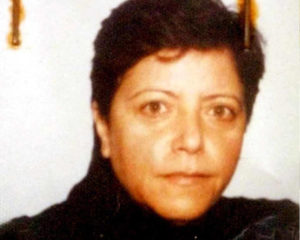
Naples, Italy, is the home of the Camorra, a group of savvy, ruthless organized criminal clans that try to work together but have a history of deadly internal clashes. By the late 1990s, during a murderous feud among Camorra cliques, a Neapolitan woman in her late forties, Maria Licciardi, materialized as the boss of one of the largest Camorra families, the Secondigliano clan. In 2001, while a fugitive from the law for two years, Licciardi made it onto a list compiled by Italian police of the nation’s thirty most wanted criminals.
Licciardi was born in 1951 in the Secondigliano section of northern Naples. Some came to regard her as a boss within the Camorra organized crime group from 1993 to 2001. Her ascendancy to the apex of a Camorra crime group occurred as women were stepping into leadership roles in the syndicate left open by men arrested, imprisoned or killed in the 1990s and 2000s. That trend continued alongside battles won by Italy’s criminal justice system.
Some wives of Mafia bosses will cut and package cocaine and heroin for their husbands at home while also performing traditional family duties such as cooking, cleaning and raising children. While men mostly handle the violent side of things, some of these women are as capable of making threats and extorting money from victims, and running drug sales operations, as their male spouses. Licciardi was one such person.
She grew up with a close-knit family deeply involved in the Camorra syndicate. Her father served as a clan boss. She seized power as a “madrina” (godmother) in the Secondigliano clan after police arrested her two brothers, Pietro and Vincenzo, and her husband, Antonio Teghemi. She took over the mantle to manage the clan’s prostitution, drug trafficking, cigarette smuggling, extortion and other rackets. Smart and practical, steeped in Camorra business, she conversed with various male Camorra bosses, listening, debating and taking action as their equal.
During the late 1990s, Licciardi gained the confidence of the “guappos” (bosses) of twenty warring criminal gangs within the Camorra in Naples. She used her skills as a negotiator to convince them that fighting was bad for business and unity would bring more money for everyone and avoid bloodshed. Her view held sway in Naples. For several months, there were no Mob-related slayings in the city.
Then, a gang war erupted over a substantial shipment of heroin from Istanbul. The cache was not refined, too strong and posed a deadly risk for users. Licciardi rejected the drugs and ordered the load returned. A rival clan, the Lo Russo, disobeyed, snatched the drug supply and sold the powder in small bags. As it turned out, the heroin was indeed too pure to use, and nearly a dozen addicts died on city streets.
Publicity about the deaths led police to arrest various known local hoodlums. The fragile union Licciardi created fell apart. Rival Camorra clans began to rebel. Over eight days, they shot several of her clan’s people to death. One of her nephews died in the clashes. Licciardi fought back with her gunmen.
Within a few days, in revenge, she allegedly had fourteen people murdered. Police believe Licciardi commanded the deaths of about thirty people in all. Her petite stature emboldened some to assign her the nickname “la piccolina,” or the little one. Others named her the “Camorra Princess.” Still, she proved herself as unabashed as her male counterparts in ordering people killed.
Neapolitan police came after her with an arrest warrant in 1999. Police raided the meeting of thirteen Mafia bosses and arrested them, but Licciardi eluded the cops. She went into hiding until officers pulled a car over outside Naples, and recognized her in it, in 2001.
Since then, Licciardi has been in prison, living under the harsh conditions of isolation from the outside world as dictated by Italian law for convicted Mafiosi. She has dropped out of the limelight, but not from her clan’s rackets. In 2009, Anna Maria Zaccaria, a sociologist at Naples Federico II University, told the Associated Press: “She’s in prison, but she still commands.”
Feedback or questions? Email blog@themobmuseum.org





